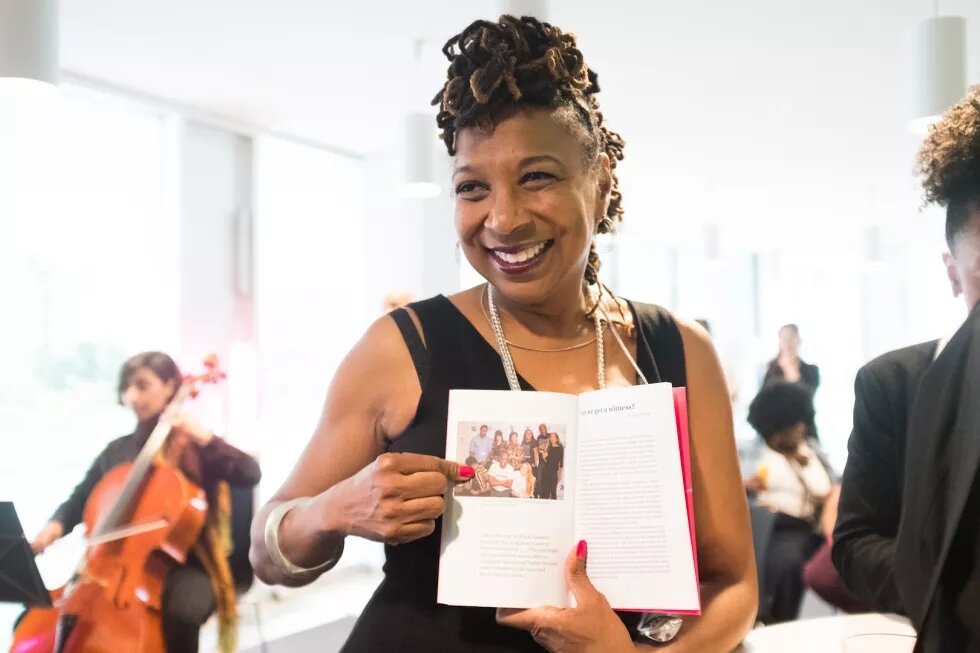Intersectionality was a lived reality before it became a term.

In 1976, Emma DeGraffenreid and several other black women sued General Motors for discrimination, arguing that the company segregated its workforce by race and gender: Blacks did one set of jobs and whites did another. According to the plaintiffs’ experiences, women were welcome to apply for some jobs, while only men were suitable for others. This was of course a problem in and of itself, but for black women the consequences were compounded. You see, the black jobs were men’s jobs, and the women’s jobs were only for whites. Thus, while a black applicant might get hired to work on the floor of the factory if he were male; if she were a black female she would not be considered. Similarly, a woman might be hired as a secretary if she were white, but wouldn’t have a chance at that job if she were black. Neither the black jobs nor the women’s jobs were appropriate for black women, since they were neither male nor white. Wasn’t this clearly discrimination, even if some blacks and some women were hired?
Unfortunately for DeGraffenreid and millions of other black women, the court dismissed their claims. Why? Because the court believed that black women should not be permitted to combine their race and gender claims into one. Because they could not prove that what happened to them was just like what happened to white women or black men, the discrimination that happened to these black women fell through the cracks.
It was in thinking about why such a “big miss” could have happened within the complex structure of anti-discrimination law that the term “intersectionality” was born. As a young law professor, I wanted to define this profound invisibility in relation to the law. Racial and gender discrimination overlapped not only in the workplace but in other other arenas of life; equally significant, these burdens were almost completely absent from feminist and anti-racist advocacy. Intersectionality, then, was my attempt to make feminism, anti-racist activism, and anti-discrimination law do what I thought they should—highlight the multiple avenues through which racial and gender oppression were experienced so that the problems would be easier to discuss and understand.
Intersectionality is an analytic sensibility, a way of thinking about identity and its relationship to power. Originally articulated on behalf of black women, the term brought to light the invisibility of many constituents within groups that claim them as members, but often fail to represent them. Intersectional erasures are not exclusive to black women. People of color within LGBTQ movements; girls of color in the fight against the school-to-prison pipeline; women within immigration movements; trans women within feminist movements; and people with disabilities fighting police abuse—all face vulnerabilities that reflect the intersections of racism, sexism, class oppression, transphobia, able-ism and more. Intersectionality has given 19 many advocates a way to frame their circumstances and to fight for their visibility and inclusion.
Intersectionality has been the banner under which many demands for inclusion have been made, but a term can do no more than those who use it have the power to demand. And not surprisingly, intersectionality has generated its share of debate and controversy.
Conservatives have painted those who practice intersectionality as obsessed with “identity politics.” Of course, as the DeGraffenreid case shows, intersectionality is not just about identities but about the institutions that use identity to exclude and privilege. The better we understand how identities and power work together from one context to another, the less likely our movements for change are to fracture.
Others accuse intersectionality of being too theoretical, of being “all talk and no action.” To that I say we’ve been “talking” about racial equality since the era of slavery and we’re still not even close to realizing it. Instead of blaming the voices that highlight problems, we need to examine the structures of power that so successfully resist change.
Some have argued that intersectional understanding creates an atmosphere of bullying and “privilege checking.” Acknowledging privilege is hard—particularly for those who also experience discrimination and exclusion. While white women and men of color also experience discrimination, all too often their experiences are taken as the only point of departure for all conversations about discrimination. Being front and center in conversations about racism or sexism is a complicated privilege that is often hard to see.
Although the president’s recent call to support black women was commendable, undertaking intersectional work requires concrete action to address the barriers to equality facing women and girls of color in U.S. society.
Intersectionality alone cannot bring invisible bodies into view. Mere words won’t change the way that some people— the less-visible members of political constituencies— must continue to wait for leaders, decision-makers and others to see their struggles. In the context of addressing the racial disparities that still plague our nation, activists and stakeholders must raise awareness about the intersectional dimensions of racial injustice that must be addressed to enhance the lives of all youths of color.
This is why we continue the work of the #WhyWe- CantWait Campaign, calling for holistic and inclusive approaches to racial justice. It is why “Say Her Name” continues to draw attention to the fact that women too are vulnerable to losing their lives at the hands of police. And it is why thousands have agreed that the tragedy in Charleston, S.C., demonstrates our need to sustain a vision of social justice that recognizes the ways racism, sexism and other inequalities work together to undermine us all. We simply do not have the luxury of building social movements that are not intersectional, nor can we believe we are doing intersectional work just by saying words.
First published in Washington Post, September 24, 2015